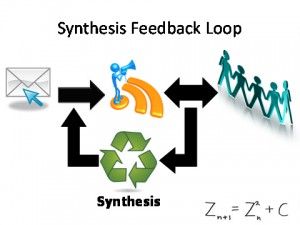A Feedback Loop for Pianists
 Recently, David H.Thomas wrote a post on choosing an instrument, tone quality and the importance of ideal tone. He pointed out the importance of monitoring your connection with the instrument daily- not just in sound but in feel. While his article was written for clarinetists, many of the same principles apply to pianos and pianists (and for that matter to all musicians, with the exception of vocalists’ ability to choose their own instruments).
Recently, David H.Thomas wrote a post on choosing an instrument, tone quality and the importance of ideal tone. He pointed out the importance of monitoring your connection with the instrument daily- not just in sound but in feel. While his article was written for clarinetists, many of the same principles apply to pianos and pianists (and for that matter to all musicians, with the exception of vocalists’ ability to choose their own instruments).
“Ultimately, I can make any instrument sound how I would like it to. The instrument offers its part, but the main sound producer is my body and my inner concept. As soon as I forget the ideal of how I wish to sound, a sort of entropy begins to erode the actual sound. Left unchecked for months or years, the sound could become cold and austere at best, harsh or unpalatable at worst. In other words, perfect tone must remain unachievable to keep the muse fresh.”
I advise my own students to take time at the beginning of each day’s practice to get in touch with their mind, body, and sound. Scales, arpeggios, progressions, warm-ups, and the like, played away from the complexities of repertoire are useful for building what I call the “Pianistic Feedback Loop” (PFL) wherein the mind conceives, the ear hears, the body responds in a constant loop.
Many pianists never experience the complete value of practicing technique skills. They dutifully practice day after day, year after year while their minds are far away, thinking about that tricky math problem, or the coming weekend, or what’s for lunch. So, after reading David’s post, I was inspired to organize my advice a bit and put it in black and white.
Who are you today?
Practicing with PFL allows you to find out what your body and mind are capable of on a given day. We all have days when we are a little off, days when we are splendid, and lots of days when we are someplace in between. Working within your capabilities on a given day means working smart and efficiently. It also means loving yourself. It allows you to tailor your practice plan on a daily basis. If you are tired and not concentrating well, you should probably just review what has already been memorized in your Bach Fugue. Attempting to memorize a new section would lead to frustration now and possible anxiety every time you approach that part of the piece in the future.
A Musical Toolbox
PFL focus allows you to practice producing many kinds of tone combined with many articulations, rhythms, dynamics, and attacks. For example scales, Hanon, etc. are not just typewriter exercises designed to get your fingers to behave when they are in Eb minor. The key to good behavior in Eb minor is having creatively practiced fundamentals in the styles of Brahms, Bach, Bartok, etc. Practice with a wet overlapping legato, an energetic detached attack, Pesante. Try different rhythms, cross your hands, play octaves. Use different rhythms and dynamics.
Listen and feel for appropriate tone quality always. Don’t forget to practice with pedal as well as without. Your foot must learn to adjust the sound according to the sound you imagine and your ear must learn to monitor the sound and call for adjustments. Think of this as assembling a musical toolbox so you will have right tool when your ear calls for it. Recent research suggests that it is useful—even necessary to vary the order of the items you practice and the way you practice them for maximum learning.
Re-discover Yourself
PFL practice does not need to be done for hours and hours. Practicing using PFL allows you to get to know yourself and renew your kinesthetic bond to the instrument each day. As David said, “Try to focus on the whole, meaning air, embouchure, voicing, angle. Enjoy the feeling. Don’t cling to it. If it doesn’t come the next day, don’t worry. It’s possible to re-discover it anew/afresh each day. Then you learn it every more deeply and can recall it more easily.”
For pianists, this “whole” means things like arm-wrist-hand alignment, balance on the bench, freedom of motion up and down the entire keyboard, firm finger joints, head floating above shoulders, unbroken flow of energy up through the body and into the key, and the connection of the ear to the pedaling foot. It definitely means imagining the sound you want and then listening out into the room for that sound. PF should never be practiced faster than you can play and monitor all the above items. Remember, this speed will vary from day to day.
Freeing the mind
PFL practice does not have to be done only through scales or exercises, although my teacher would have felt differently–that the simple components of technique allow one to focus on feel and tone away from other complexities. However, a simple piece or set of pieces in which you are able to totally focus on the tone and how you make it will also allow you to practice PFL. Many concert pianists have such pieces that serve them well. The important thing is that the piece should be something that is so effortless for you that your mind is totally free to focus on sound and feel.



You are welcome- Great post!
Thanks for the mention. Glad to have inspired a post. It’s easy to see how those ideas can apply to any instrument.